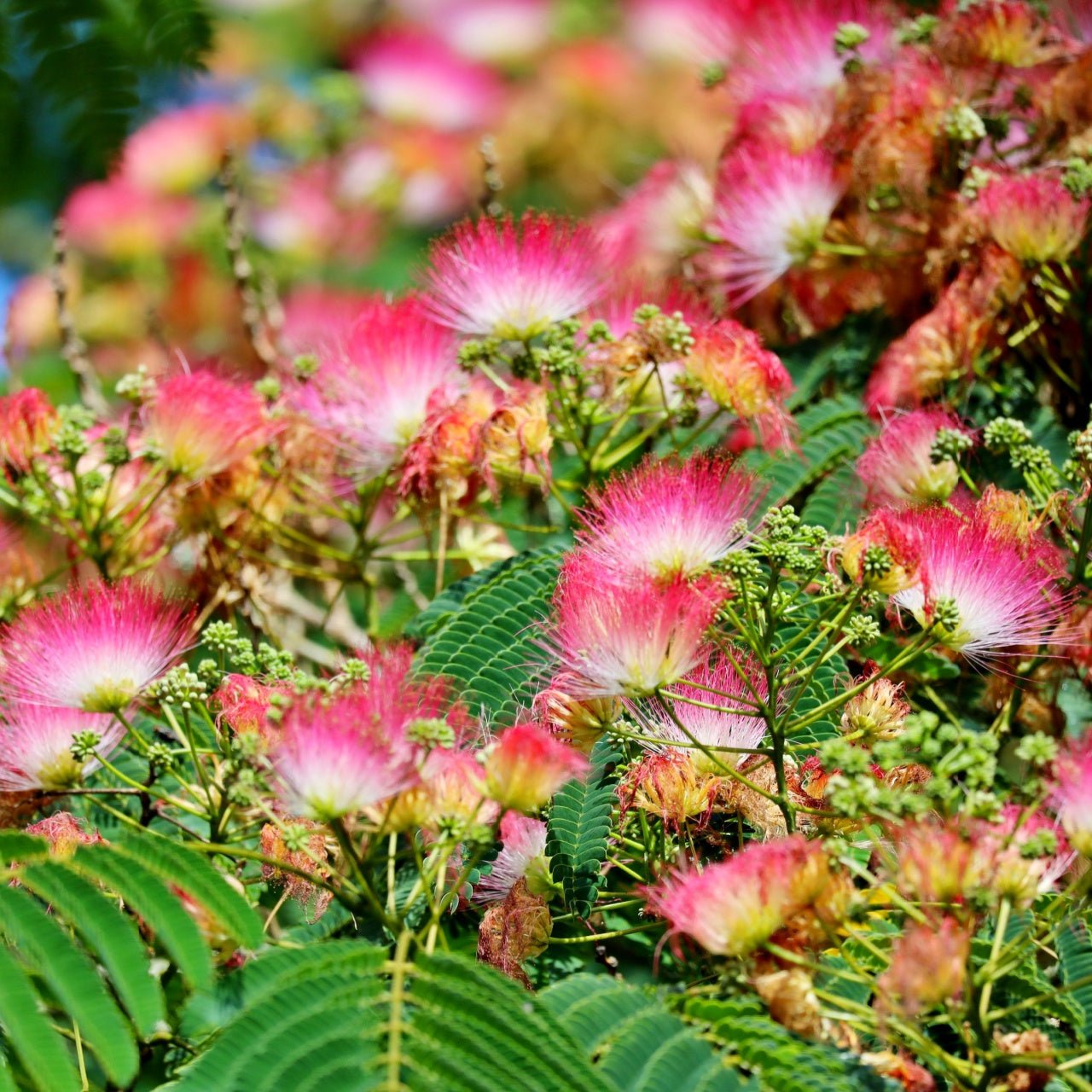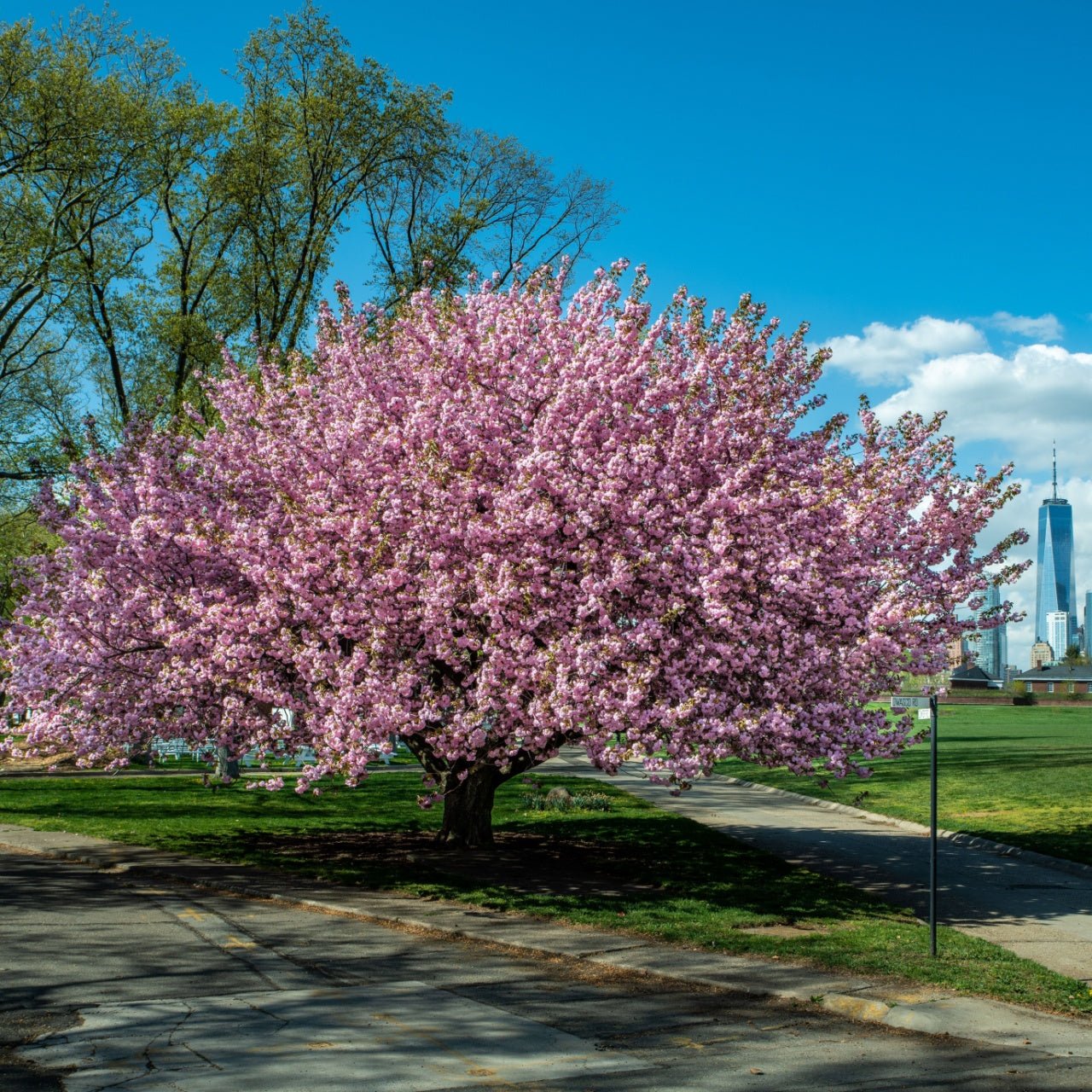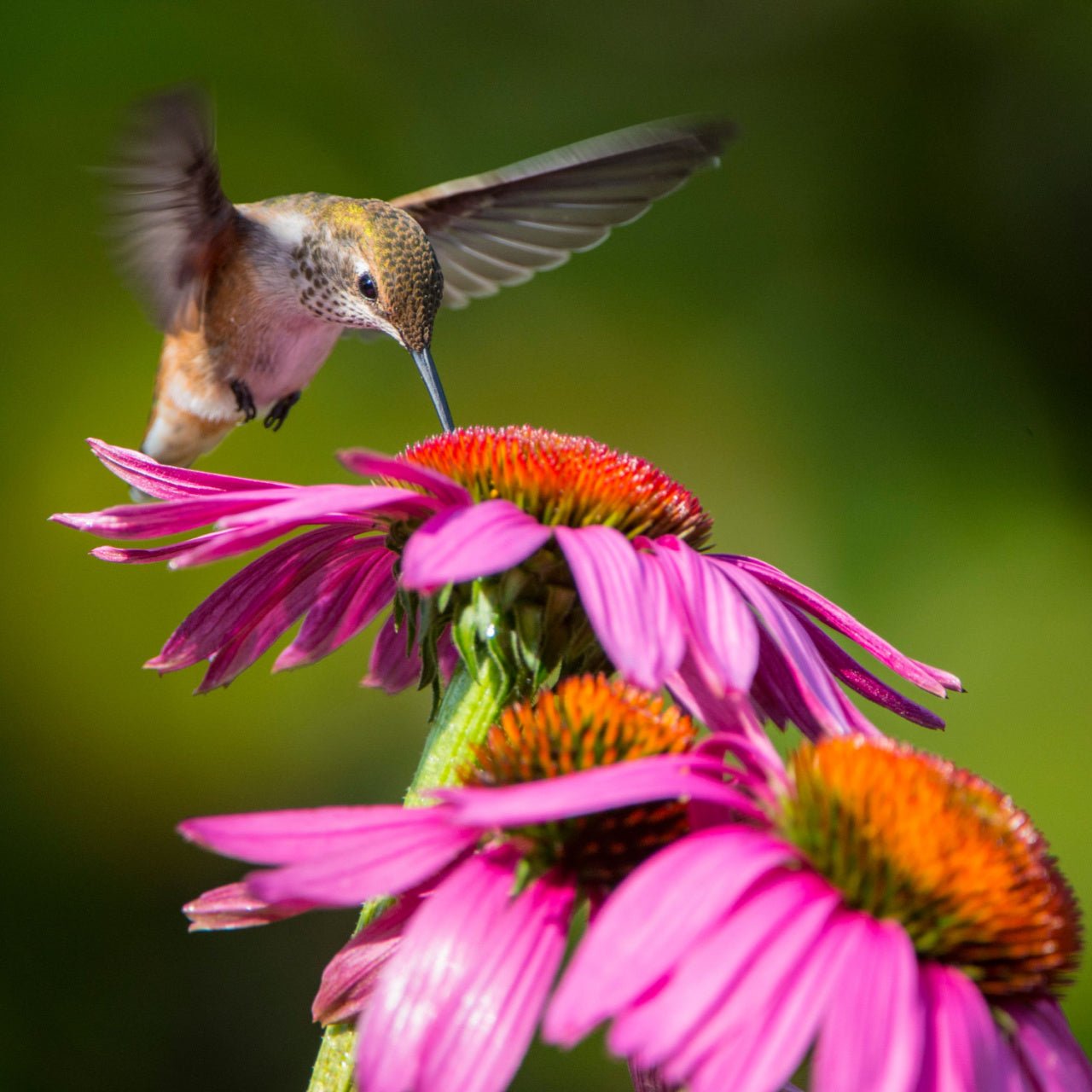




Mimosa Tree
Vibrant pink flowers attract pollinators
Low maintenance, hardy tree
Drought-tolerant and adaptable
Thrives in
ZONE 6ZONE 7ZONE 8ZONE 9ZONE 10This plant ships:
November 20251 Year Guarantee on all plants
Mimosa Tree - Albizia julibrissin
The Mimosa Tree, also called the Persian Silk Tree, is a stunning ornamental tree. It is a tree native to southwestern and eastern asia, specifically Iran, Azerbaijan, Korea, and China. The plant derives its botanical name from the Persian word گل ابریشم (gul-i abrisham) which means “silk flower”. The tree has a distinct flower that resembles a silk tassel, with stamens that look like long, pink threads. These unique blooms are certainly recognizable and absolutely gorgeous – a perfect centerpiece for your garden space.
Plant Details - Mimosa Tree
Family: Fabaceae
Light Requirement: Full sun
Water Needs: Minimal
Height: 20-40 ft
Spread: 20-50 ft
Growth Rate: Rapid
Soil Preference: Well drained
Season of Interest: May - July
Flower Color: Pink and white
Fruit: Yellowish brown pod
Wildlife Value: Bees and butterflies
Notable Characteristics - Mimosa Tree
The small, deciduous tree has rather thin branches, which support a mass of fern-like leaves. The thin fronds come together to make a uniform, oblong leaf that is a brilliant forest green. The Mimosa Tree's modern, Persian name is شبخسب (shabkhosb), meaning “night sleeper”, and is similarly referenced in Japan and China because it closes its leaves at night and during rain. The fronds curl into each other and the leaves droop towards the ground. The flowers are most visibly fuschia, but are bright white growing out of their yellow center. This ombre effect, combined with its unique, hair-like texture gives the blossoms so much visual dimension. A fully grown tree has a broad crown of branches, and its lush fronds provide a perfect canopy of dappled sunlight.
Landscape and Maintenance
The Mimosa Tree is actually a fairly uncommon ornamental tree in the United States, though it is more common in Europe. This is because it is highly invasive in the United States and North America, and its rapid growth rate can cause overcrowding of other plants and trees. Its numerous seeds are wind dispersed and can remain fertile even after long periods of drought. It is also highly susceptible to disease, the most common of which being mimosa vascular wilt which is a fungal disease. This tree is undeniably gorgeous, but until breeding work can produce a plant that does not go to seed, it may be hard to control.
This Is How Your Plants Will Look upon Delivery

Bloom Season
Summer
Bloom/Foliage Color
Pink
Height at Maturity
Over 25 Feet
Care
Mimosa trees thrive in well-draining soil and benefit from regular watering during dry spells. Trim in late winter or early spring to preserve their shape and remove dead or crossing branches. Fertilize annually with a balanced fertilizer for healthy growth.
Plant Reproduction
Mimosa Tree spreads by seeds, root suckers, and invasive growth
Plant bare root trees during the dormant season in early spring or late fall (November through April). Dig the hole twice as wide as the roots so the soil is well-drained. Position the tree so the root flare is at or just above ground level. Fill the hole back with the soil you dug from and water. Maintain soil moisture, especially in the tree's early years, by providing deep, regular watering. Apply a 2-4 inch mulch away from the trunk at the base to retain moisture and suppress weeds. Prune trees during the first few seasons to establish strength and resilience, remove damaged branches, and continue maintenance pruning as the tree matures. Regularly inspect for pests and diseases and apply integrated pest management practices. Protect young trees from mechanical damage and extreme temperatures with tree guards, and stake them if necessary for support, removing the stakes after one or two years.
Shipping date depends on the date displayed and chosen when you order from the product's page.
We only accept returns on plants verified dead. If you think your plants have died, we offer a 1 year warranty, please use this File a Claim Link to verify dead plants and start with return warranty process.







Graceful Foliage:
Its fern-like leaves offer a delicate, feathery look, enhancing your landscape.
Fast Growth:
The Mimosa Tree grows quickly, providing rapid, lush greenery.
Vibrant Blooms:
The Mimosa Tree’s pink, fluffy flowers add a tropical touch to your garden.
Sensitive Reaction:
Mimosa pudica folds its leaflets when touched, possibly as a defense mechanism to expose its thorn-covered stems.
Caring Tips
How do I care for my Mimosa Tree?
Each box contains detailed care instructions and information about your product. But here's the basics.
Care Tips
Mimosa trees thrive in well-draining soil and benefit from regular watering during dry spells. Trim in late winter or early spring to preserve their shape and remove dead or crossing branches. Fertilize annually with a balanced fertilizer for healthy growth.
Light Requirements
Mimosa trees thrive in full sun, needing at least six hours of direct sunlight each day. They prefer bright, open areas with abundant light to support their rapid growth and vibrant blooms, while shade or partial sun can impede their development.
Hardy Planting Zones
6 • 7 • 8 • 9 • 10
Header
Use this content to share information about your store and products.
Frequently Asked Questions
How often should I water my plants?
How do I know if my plant is getting too much or too little sunlight?
What should I do to prepare my plants for winter?
What are the signs that my plant needs fertilizing?
How can I prevent pests from damaging my plants?
How do I choose the right plant for my climate zone?






